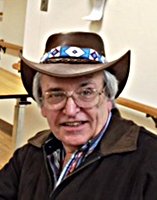
Alan B. Crawford
By Alan B. Crawford
This past week, a conversation turned to how, in the time of my father, and grandfather, plus my own, the use of converting older automobiles into something more useful on the farms.
Back in the day, the new-fangled horseless carriages gradually replaced the horse as the main source of travel. It wasn’t long after this that they also began replacing horses as beasts of burden on the farm. Horses required a significant amount of daily care. They were needed to plow the fields, cut and gather the hay, and haul the produce to market.
The conversion of the farm labor over to industrial endeavors, also lessened the ability and time to care for farm animals. So, what did our forefathers do? They adapted and overcame!
Older, and or damaged vehicles, became a resource. There was no computers, no major electronics, and nothing to say of environmental restraints. Nope. It was just the basics, a steel frame, an engine, a transmission, a couple of axles, and some wheels. It was never simpler, and gasoline was cheap! Much cheaper than all the work and feed which went into maintaining a team of horses.
Old Model A’s were stripped down to the frame, removing the fenders, lights, seats, and so on. Blacksmiths and welding supplied the modifications which allowed farm equipment, previously powered by equine energy to be hooked up to these unique vehicles, lovingly referred to around here as “doodlebugs”.
One thing about old Henry Ford’s Model A’s was their ability to function with little maintenance and upkeep, and since production has begun to standardized by precision machining, many parts were interchangeable. And if they weren’t, it wasn’t all that difficult to arrive at a modification to make things work.
Anyone growing up in the 1950’s must remember the J. C. Whitney catalogs. You could dig into the pages and find conversion kits to mate various engines with various transmissions, regardless of manufacturer. I fondly remember studying these pages and all the gadgetry being offered, dreaming of what I could build with discarded parts.
Growing up, we didn’t have sophisticated college degrees guiding us on how to put things together. We learned by trial and error, tribal knowledge shared between friends and their fathers, and what we could learn from reading early manuals and getting tips from Mechanix Illustrated.
In the last 70 years, the automobile has become increasingly complicated. The average backyard mechanic can no longer do much more than check fluid levels, tire air pressure, and maybe do an oil and filter change. This is due to both the complexity of today’s vehicles and the requirement of specialty tools and training.
The first half of the 20th Century, there was no idea or concept that one day these mechanical marvels would drive themselves, park themselves, and have cameras to capture the landscape behind when backing up. The power steering was supplied by the “arm strong” method. I don’t think the word “computer” had yet been invented.
My generation learned from their fathers how things worked, and how to make them work, taking extra parts and building something which you could drive and take some pride in. Before we were able to obtain a driver’s license, we would cobble up a go kart out of a kid’s pedal car, an old lawnmower engine, and whatever gears we could find which would bolt up somehow. Trial and error taught us how to get the most torque and most speed.
Our nemesis was using materials which had no business carrying our weight and gravity. Fortunately we all survived, though there were numerous incidents of road rash and boo boos. Some of us continued increasing our knowledge and entered into stock car racing. Today, this sport has advanced to an expensive hobby, leaving the little guys in the dust. Literally.
A number of us still have vintage cars, including a doodlebug or two, but what will become of these in another twenty or thirty years? Will there be people in the next generation who will keep them running, or even care? Somehow, I’ve always found it rewarding to be able to grab a wrench and screwdriver and make something work. And, if all else fails, a good rap with a ballpeen hammer might solve the issue.
I have a photo of my Dad, on leave in 1943 from the “Big One” as Archie Bunker would say, plowing up a field on the farm with a doodlebug. Note the wood spoked wheels, the old horse drawn plow, and the smile on his face. Life doesn’t get any better.